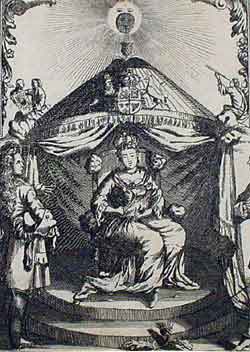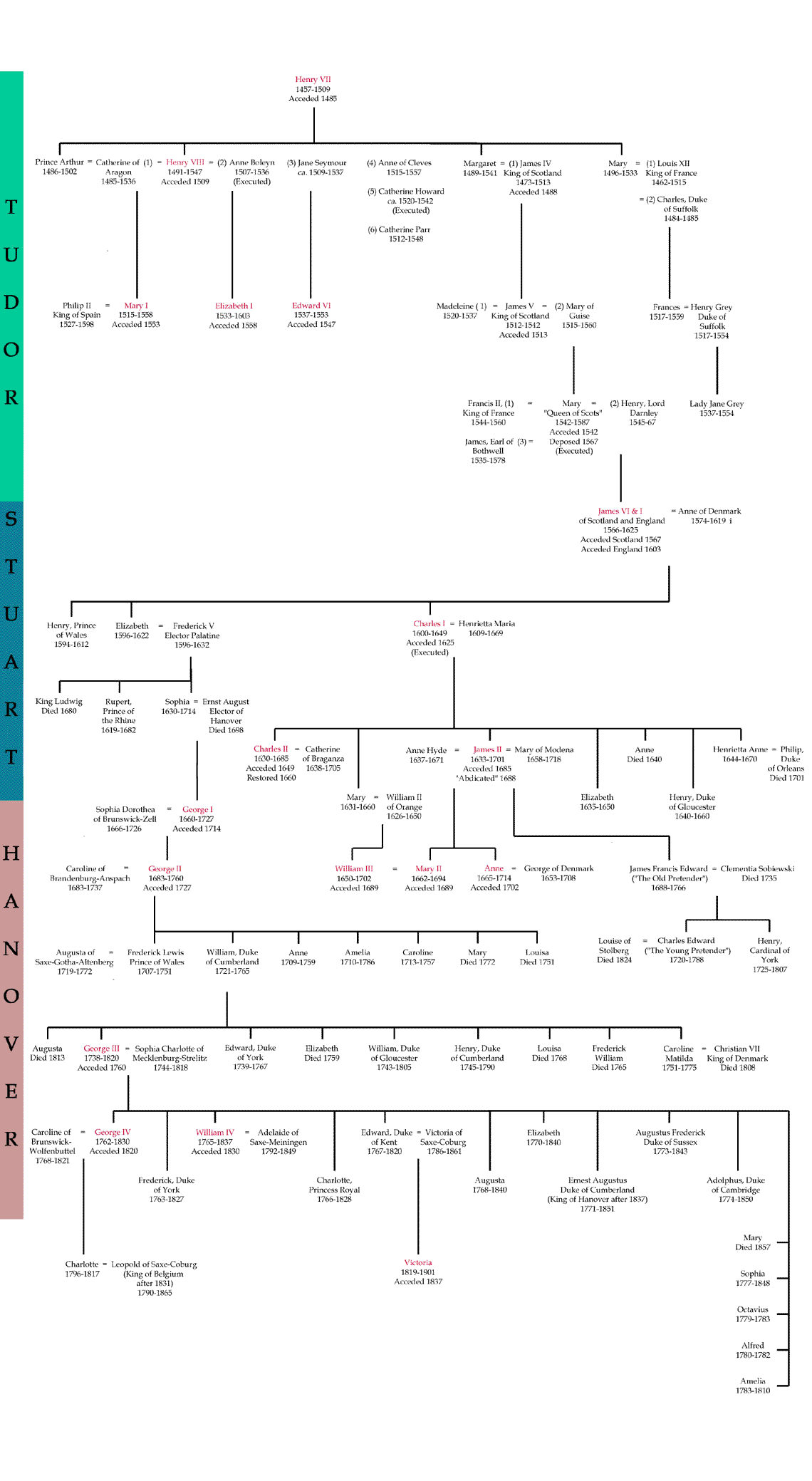
|
The Succession, 1485-1837: The Houses of Tudor, Stuart, and Hanover
|

|
|
The problem of a "certainty in the succession" of the Crown of England (and later Great Britain) was one that vexed England for much of the sixteenth, seventeenth, and eighteenth centuries. Although the defeat of Richard III at Bosworth (22 August, 1485), and the union of the feuding Houses of York and Lancaster in the person of Henry Tudor, Earl of Richmond (Henry VII) brought the long dynastic struggles of the War of the Roses to an end, the issue of succession remain very much a central concern to the nation, especially when religion was added to the mix after the Henrician and Edwardian Reformations (from about 1529 to 1553); henceforth, the religous affiliations of claimants to the throne would be of vital importance. The impact of religion upon the succession became most manifest with the succession of the Catholic Mary I in 1553: the violence of the so-called "Marian Reaction" to the Reformation ensured that the personal faith of the monarch and his or her putative heirs would henceforth be a subject for much scrutiny and debate. Protestant suspicions concerning the crypto-Catholic religious policies of Charles I and his Archbishop, William Laud, helped precipitate the English Civil War in 1642; similarly, memories of the "Protestant Martyrs" burned at the stake during Mary's reign remained a potent force behind the calls of the Exclusionists seeking to ban the Catholic James, Duke of York, from the throne in 1679-1682 and would, even more dramatically, be a contributing factor in the Glorious Revolution that dethroned James in 1688, setting joint Protestant monarchs upon the throne, and freeing England from the threat of "Popery and slavery." Yet the Glorious Revolution did not bring to a conclusion the question of succession: even with the accession of the House of Hanover in 1714, it remained a vital question. On the one hand, the continued threat posed by Jacobite plots (leading, in 1715 and 1745 to actual armed insurrection) ensured that the focus remained upon the question of the legitimacy of the Hanoverian claimants to the throne. On the other, the importance of the domestic politics of the royals was also highlighted by the strangely Oedipal way in which the Hanoverian heirs (the future George II, and his own son, Frederick Lewis, Prince of Wales, in particular) posed political challenges to their ruling fathers. The impact of this political and religious turmoil, all of it relating to the domestic affairs of the nation's rulers, can hardly be overemphasized: the issue of succession provided writers with both a subject matter and a motive for their political polemic. Works as diverse as Dryden's Absalom and Achitophel, Behn's Oroonoko, Pope's Epistle to Augustus, and Fielding's Tom Jones bear the traces, in a variety of ways, of the dometic politics of the era. The genealogical table given below provides a fairly detailed picture of the succession of the British crown through three royal families: the Tudors, the Stuarts, and the Hanoverians. In the future, links to brief biographical notes and assessments of each king or queen will be available by clicking upon monarchs' names; at the moment, this is available only for Charles II and James II. Note: Due to the size and complexity of this chart, it proved impossible to fit it properly within the width of a normal webpage without seriously reducing legibility. It will therefore be necessary to scroll left to right to view the entire table. |
||||
|
|
||||

|
||||
Website maintained by: Mark
McDayter
Website administrator: Mark McDayter
Last updated: April 25, 2002